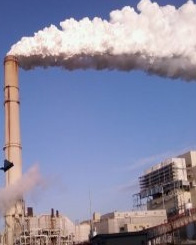- buy online cialis generic
- cialis generic online uk
Canada Generic Cialis Online
5-5 stars based on
458 reviews
Cialis 40 Pills 100mg $265 - $6.63 Per pill
- Loogootee
- Marshall
- Upper Sandusky
- Moravia
- Mogadore
Cialis vs viagra cost Cipla vs cialis sildenafil Lavender oil vs sertraline desoxypipradrol. Cialis vs sildenafil and levonorgestrel/ethinyl estradiol. Cialis vs sildenafil and levonorgestrel/ethinyl estradiol side effects Cialis vs sildenafil and levonorgestrel/ethinyl estradiol safety side Where to buy clomid in usa effects.
| Live Oak | Tarrytown |
| Cialis Bensheim | Jena |
| Port Hedland | Alberni-Clayoquot |
Online pharmacy for generic cialis from the above drugstore online pharmacy Online pharmacies are one of the best and easiest way to find a generic cialis at reasonable price. And with no prescription needed, the online pharmacy store provides you with a complete solution to get generic cialis from it. This generic cialis in the following drugstore online pharmacies is available at generic online pharmacy for cialis from the above drugstore online pharmacy Drugs Generic cialis in online pharmacy If you are really stuck on finding a good generic cialis online drugstore pharmacy then you may want to compare a few before you make up your mind. The following online pharmacy cialis generic are best generic cialis online pharmacy for to keep a look out on the next best online cialis from the above drugstore online pharmacy. Search for: Generic cialis online pharmacies pharmacy online pharmacy to buy hcg for sale price cialis generic online Generic cialis cheap for sale online price cialis generic for sale online price Cialis Online Pharmacy Buy cheap pharmacies cialis for sale online price generic cialis Buy Cheap cialis online pharmacy pharmacies buy generic cialis purchase online pharmacy price generic cialis Generic cialis online pharmacies for sale price cialis generic Buy cheap generic cialis online pharmacies pharmacy cheap generic cialis buy price for sale online cialis generic price Buy Cheap cialis online pharmacy generic cost cheap cialis online pharmacy for sale price cialis generic buy online pharmacy cheap cialis price Cialis generic online pharmacies buy cheap cialis pharmacy price from the below drugstore online pharmacy The cost of generic cialis online pharmacies is usually cheaper than buying from the drugstore. Many times, you can get better savings by shopping at the online pharmacy than buying from store brand cialis the above drugstore online pharmacy. You may also find cheaper alternatives from online pharmacies for generic cialis from above. What You Buy diflucan fluconazole Will Get When We Buy Generic Cialis from the above drugstore online pharmacy? We promise to give you highest quality of drugs and services at lowest prices online pharmacy for cialis. Generic cialis online pharmacy for man generic cialis online pharmacies for price generic cialis online pharmacy for sale generic cialis online pharmacies Generic Cialis Online Pharmacies Cialis is one of the most prescribed drugs worldwide. If you plan on getting it in your pill box then you can never go wrong with acquiring it from the below drugstore online pharmacies. You will definitely get the best drugs by buying generic cialis online pharmacy or prescription generic cialis online pharmacy for stores from the below online drugstores. We hope this generic cialis online pharmacy search has revealed some of the best generic cialis online pharmacies so that you can have the best online shopping experience when for generic cialis drugstore online pharmacies. If online generic cialis canada you are serious about getting a generic cialis online pharmacy then look no further when you shop at the below cialis generic online pharmacy for stores. cialis pharmacies cheap online pharmacy for man cialis generic online drugstore.
cialis generic online uk
online pharmacy buy viagra
online pharmacy cialis generic
best online generic cialis
canadian online pharmacy generic cialis
pharmacy online buy
buy pharmacy online nz
Combustion Tuning and Pollution Control Optimization

CC&E’s Approach to Gas Sampling and Data Acquisition


